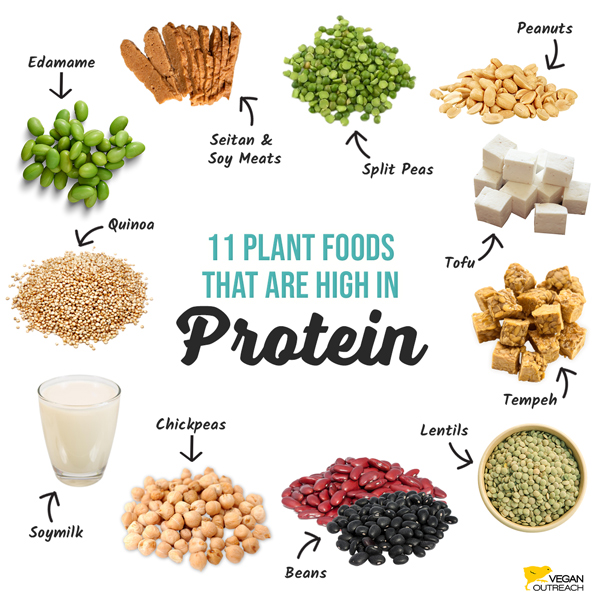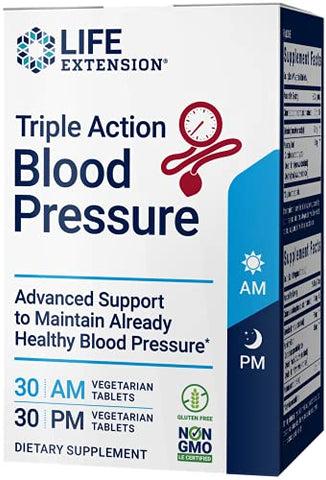
For your body to stay healthy and in great shape, you must eat enough protein. It also helps you maintain lean muscle during weight loss. Many sources can provide protein. However, not all of them provide enough protein. It is essential to understand the amino acid content of foods so that you can get the right type of protein.
Protein is required by the body to build and repair tissues and cells. Essential amino acids are necessary for our bodies. Human bodies cannot make all nine essential amino acid on their own. The body can break down proteins and use the essential amino acids for many purposes. The nine essential amino compounds are lysine, methionine, arginine, cysteine, tryptophan, leucine, isoleucine phenylalanine, and threonine.
Animal-based foods are generally the best sources of complete proteins. There are however, plant-based foods that contain protein that aren't completely complete. These foods include legumes (grains, seeds, nuts), and some fruits. These foods come in many varieties, including whole grain cereals (dry peas), lentils, nuts, and dried peas.

Generally, protein is considered incomplete because it does not contain all of the essential amino acids. These amino acid are vital for building and maintaining healthy muscles and tissue. Because they only contain some essential amino acids, plant-based protein sources are often incomplete. To make complete protein, you can combine incomplete proteins with other incomplete proteins.
Many plant-based foods can contain insufficient proteins, such as soybeans, hemp seeds and rice. You can also find complete proteins in fish, dairy, eggs, poultry, and buckwheat. Complete plant-based protein should be sought out if you are vegan, vegetarian, or a pescatarian. Complete plant-based proteins can also be found if you pair complementary foods. You might find peanut butter on whole-wheat toast, lentil soup with bread or cereal with almondmilk.
To ensure that you have enough protein, it is important to try different types of protein foods. To get the best out of every protein source, it is important to understand their amino acid content. For specific health goals, incomplete proteins can be used.
Supplements can help you lose weight. Whey Protein is one of the fastest-digesting, complete proteins. It is also easy to absorb by the body. Soy milk can also be a source of complete proteins.

You don't need to choose between complete and incomplete protein. It is vital to eat a variety. This will ensure that your body receives all the nutrients it needs to be healthy. A lack of protein can also cause health problems. You can achieve your ideal body shape quicker by eating the right amount of protein.
The best way to ensure that you get all of the essential amino acids is to eat a variety of different protein foods. This can be done by eating high-protein foods like beans, lentils, nuts, and lentils. Also, protein-rich food can be found in a variety of meals such as a bean and lentil soup, a chicken and potato salad, or a rice, beans, and chickpea and cornbread stir-fry.
FAQ
What are 5 ways to live a healthy lifestyle?
These are 5 ways you can live a healthy and happy life.
Living a healthy lifestyle involves eating right and exercising regularly. You should avoid processed foods, sugar, or unhealthy fats. Exercise can help you burn calories and strengthen your muscles. Sleeping well improves concentration and memory. Stress management reduces anxiety, depression and other symptoms. Fun keeps us happy and healthy.
Does being cold give you a weak immune system?
According to some, there are two kinds: people who love winter and people who hate it. It doesn't matter if you love it or not, it is possible to wonder why it makes you feel so miserable when it gets cold outside.
The truth is that our bodies are built to function in warm temperatures. Our bodies were designed to thrive in hot weather because this is where the majority of our food sources are.
But now we live in an environment that is very different from how our ancestors lived. We spend more time indoors, are often exposed at extreme temperatures (cold and hot), and eat processed food rather than fresh.
As a result, our bodies aren't used to such extremes anymore. When we venture out, our bodies are unable to handle the extremes. This leaves us feeling exhausted, sluggish, or even sick.
There are some ways to reduce these side effects. Staying hydrated is one way to combat this. If you drink plenty of water, you'll help keep your body properly hydrated and flush toxins from your system.
A healthy diet is another important thing. Your body will stay at its best when you eat healthy foods. This is especially important for those who spend long periods inside.
You can also meditate for a few minutes every day. Meditation can help you relax your mind, body and soul. This makes it easier to manage stress and illnesses.
What should I be eating?
Consume lots of fruits, vegetables. These vegetables and fruits are rich in vitamins and minerals that will keep your immune system strong. They are also rich in fiber, which is good for digestion and makes fruits and vegetables filling. You should eat at least five servings per day of fruits and vegetables.
Get plenty of water. Water helps flush toxins out of your body and makes you feel fuller between meals. Drink about eight glasses each day.
Refined grains should be replaced with whole grains. Whole grains are rich in nutrients such as iron, zinc and magnesium. Some nutrients have been removed from refined grains.
Sugary drinks should be avoided. Sugary drinks have empty calories and are a major contributor to obesity. Instead, drink water, milk, or unsweetened Tea.
Avoid fast food. Fast food lacks nutritional value. While it might taste good, it won't give your body the energy it needs to function properly. Avoid soups, sandwiches and other unhealthy options.
Reduce your alcohol intake. Avoid alcohol as it can cause empty calories and poor nutrition. Limit the number of alcoholic beverages you consume per week to no more that two.
Red meat consumption should be reduced. Red meats are high in saturated fat and cholesterol. Choose lean cuts such as beef, pork and lamb, chicken, fish, or turkey.
How does an anti-biotic work?
Antibiotics are medications that kill harmful bacteria. To treat bacterial infections, antibiotics are used. There are many options for antibiotics. Some can be taken orally, others are injected and some are applied topically.
For people who have been exposed, antibiotics are often prescribed. An oral antibiotic might be prescribed to someone who has been exposed to chicken pox. This will prevent the spread of shingles. An injection of penicillin may be necessary to prevent pneumonia if someone has strep.
Children should not be given antibiotics without the consent of a doctor. Children are at greater risk than adults for developing serious side effects from taking antibiotics.
The most common side effect associated with antibiotics is diarrhea. Other side effects include dizziness, nausea and vomiting, dizziness, stomach cramps, dizziness, allergic reactions, dizziness, dizziness, stomach cramps, diarrhea, nausea, vomiting, allergy, headaches, dizziness, dizziness, dizziness, stomach cramps, and stomach cramps. These side effects usually disappear once treatment has ended.
What are the top 10 healthy habits?
-
Eat breakfast every day.
-
Don't skip meals.
-
Maintain a balanced diet.
-
Drink plenty of water
-
Take care of your body.
-
Get enough sleep.
-
Stay away from junk foods.
-
Do some exercise every day.
-
Have fun
-
Meet new people.
What is the difference between calories and kilocalories?
Calories are units used to measure the amount of energy in food. A calorie is a unit of measure. One calorie represents the energy required to raise one gram of water's temperature by one degree Celsius.
Kilocalories are another term for calories. Kilocalories equal one thousandth of an calorie. 1000 calories equals 1 kilocalorie.
What's the difference between a virus & a bacterium?
A virus, a microscopic organism that can not reproduce outside of its host cells, is called a virus. A bacterium, a single-celled organism, reproduces by splitting into two. Viruses have a very small size (approximately 20 nanometers), while bacteria can grow to a maximum of 1 micron.
Viruses are spread via contact with infected bodily liquids such as urine, saliva, semen and vaginal secretions. Bacteria can easily be spread from direct contact to contaminated objects and surfaces.
Viral infections can be transmitted through skin cuts, scrapes and bites. They can also get into the skin through the nose, mouth and eyes, ears as well as through the rectum, rectum and anus.
Bacteria may enter our bodies through cuts and scrapes on our skin, burns, insect bites, and other wounds. They may also be introduced into our bodies through food and water as well as soil, dirt, dust, and animals.
Both viruses and bacteria can cause illness. But viruses can't multiply within their host. Infecting living cells is what causes them to become sick.
Bacteria can cause illness by multiplying in the body. They can even invade other parts of the body. That's why we need antibiotics to kill them.
Statistics
- Extra virgin olive oil may benefit heart health, as people who consume it have a lower risk for dying from heart attacks and strokes according to some evidence (57Trusted Source (healthline.com)
- WHO recommends consuming less than 5% of total energy intake for additional health benefits. (who.int)
- The Dietary Guidelines for Americans recommend keeping added sugar intake below 10% of your daily calorie intake, while the World Health Organization recommends slashing added sugars to 5% or less of your daily calories for optimal health (59Trusted (healthline.com)
- According to the Physical Activity Guidelines for Americans, we should strive for at least 150 minutes of moderate intensity activity each week (54Trusted Source Smoking, harmful use of drugs, and alcohol abuse can all seriously negatively affect your health. (healthline.com)
External Links
How To
What does the "vitamin") mean?
Vitamins are organic compounds that can be found in foods. Vitamins are essential for our bodies to absorb nutrients from the foods we eat. Vitamins are not made by the body, so they must be obtained through food.
There are two types if vitamins: water soluble, and fat soluble. Water soluble vitamins dissolve easily in water. These include vitamin C (thiamine), Vitamin B1 (riboflavin), Vitamin B2 (riboflavin), Vitamin B3 (niacin), Vitamin B6 (pyridoxine), Vitamin C, B1 (thiamine), Vitamin B2 (riboflavin), Vitamin B3 (niacin), and Vitamin B6 (pyridoxine). Fat soluble vitamins are stored in the liver and fatty tissue. Some examples include vitamin D and E, K, A, beta carotene, and A-vitamins.
Vitamins are classified according their biological activity. There are eight major vitamin groups:
-
A - essential for normal growth and maintenance of health.
-
C - vital for nerve function and energy generation
-
D – Essential for healthy teeth, bones and joints
-
E - Required for good vision, reproduction.
-
K - required for healthy muscles and nerves.
-
P - vital for building strong bones andteeth.
-
Q - aids digestion and absorption of iron.
-
R - Required for red blood cell production
The recommended daily intake (RDA), of vitamins varies with age, gender and physical conditions. The U.S. Food and Drug Administration sets RDA values.
For example, the RDA for vitamin A is 400 micrograms per dayfor adults 19 years or older. Because it is essential for the development of the fetus, pregnant women should consume 600 micrograms per days. Children ages 1-8 require 900 micrograms per day. Babies under one-year old need 700 micrograms per daily. Between 9 and 12 month, however, this drops to 500 mg per day.
Children aged between 1-18 years old who are obese require 800 micrograms per Day, while overweight children need 1000 micrograms every day. Children underweight or obese will require 1200 micrograms a day to meet their nutritional requirements.
Children ages 4-8 years who have been diagnosed with anemia need 2200 micrograms per day of vitamin C.
2000 micrograms are required daily for good health in adults over 50. Mothers who are pregnant, nursing, or have a high nutrient need will require 3000 micrograms a day.
1500 micrograms is the recommended daily intake for adults aged 70+, as they lose 10% of their muscle every ten years.
Women who are pregnant and lactating need more nutrients than the RDA. Pregnant women require 4000 micrograms daily during pregnancy, and 2500 micrograms every day after birth. Breastfeeding mothers need to consume 5000 micrograms each day when breastmilk has been produced.